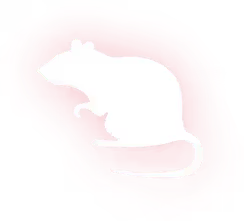.webp)

Flea Control For Yard in Diboll, TX
Flea control for yards in Diboll, TX by Spot On Pest Control, LLC. Pet-safe treatments & follow-ups to eliminate fleas outdoors—schedule your lawn inspection.

Flea Control For Yard in Diboll, TX
Fleas in Diboll, TX are more than an annoyance; they are a persistent seasonal problem that affects pets, families, and outdoor living spaces. Flea Control For Yard in Diboll, TX focuses on stopping flea populations before they move indoors by combining precise yard inspections, targeted treatments, pet treatment coordination, and habitat modification. This page explains what to expect from professional outdoor flea control, common local issues, treatment options, recommended schedules, and safety guidance for homes in the Diboll area.
Why yard-focused flea control matters in Diboll, TX
Diboll sits in East Texas with warm temperatures, high humidity, abundant wildlife, and shaded, mulched landscaping. Those conditions create an ideal environment for flea life cycles to accelerate. Common flea issues in Diboll include heavy infestations under porches and in shaded lawns, recurring problems tied to wildlife corridors (opossums, raccoons, feral cats), and year-round pressure that peaks in spring and summer. Treating indoor environments alone often fails because the yard remains a reservoir for eggs, larvae, and adult fleas. Effective yard flea control reduces reinfestation and protects pets and family members who spend time outdoors.
.avif)
Common flea problems found during yard inspections
A professional yard inspection identifies the likely sources and hotspots. Typical findings in Diboll yards include:
- Shaded, moist areas under trees and porches where flea larvae thrive.
- Leaf litter, pine straw, and deep mulch that shelter immature flea stages.
- Wildlife activity zones and pet run areas that increase flea introduction.
- High-traffic pet pathways and bedding spots where adults congregate.
- Areas with poor sunlight or drainage that retain moisture and humidity.
An inspection will assess infestation severity, map hotspots, and recommend the appropriate mix of treatments and habitat changes.
What a professional inspection and treatment plan includes
Inspections are systematic and focused on identifying the most productive flea habitats. A typical process:
- Walk-through of yard to locate shaded areas, animal activity, and breeding sites.
- Inspection of pet areas, kennels, and bedding, plus evaluation of adjoining properties and wildlife vectors.
- Soil and vegetation assessment to determine appropriate product choice and application method.
- Development of an integrated treatment plan combining targeted applications, habitat modification, and pet coordination.
Treatment plans are customized to the yard layout and infestation level; the goal is targeted control that minimizes unnecessary chemical exposure.
Targeted outdoor treatments explained
Effective outdoor flea control commonly uses a combination of products and application techniques:
- Adulticides (spot and barrier sprays): Fast-acting products that reduce the active adult flea population quickly. Applied to lawns, borders, and pet pathways to deliver immediate reduction in biting adults.
- Larvicides and insect growth regulators (IGRs): Prevent immature stages from maturing into biting adults. These products are essential for long-term suppression because they disrupt the flea life cycle at the egg and larva stages.
- Granular applications: Granules are useful for broader lawns and are easily applied with spreaders to maintain an even distribution across turf and bare ground.
- Localized spot treatments: Concentrated applications to flea hotspots like under bushes, around foundations, and in pet resting areas reduce total chemical use while targeting problem zones.
- Perimeter treatments: Creating a treated buffer around structures can lessen the chance of fleas moving indoors.
Technicians select EPA-registered products and follow label directions. Combination approaches that pair adulticide with a larvicide or IGR provide the best results for controlling current adults while preventing future generations.
Coordinating pet treatment with yard control
Outdoor flea control must be part of an integrated approach that includes treating pets. Key points:
- Ask a veterinarian about appropriate topical or oral flea preventives before or during yard treatments.
- Wash and treat pet bedding, outdoor pet houses, and sheltered sleeping areas.
- Keep pets away from treated areas until products have dried and label re-entry intervals are satisfied.
- Address indoor vacuuming and laundering to remove eggs and larvae carried indoors.
Coordinating yard work with pet treatment eliminates the flea life cycle on multiple fronts and speeds recovery.
Recommended schedule for Diboll yards
Flea pressure in Diboll varies seasonally but often requires multiple treatments for reliable control:
- Initial inspection and first treatment at the start of peak activity (early spring).
- Follow-up treatment 2 to 4 weeks after the initial application to address emerging adults from existing eggs and larvae.
- During peak months (spring through fall), treatments every 4 to 6 weeks may be necessary for heavy infestations or properties with regular wildlife or pet activity.
- In lower-activity months, quarterly monitoring and spot treatments may suffice.
Consistency is important: repeated, targeted treatments combined with habitat changes deliver the most durable results.
Habitat modification and prevention tips
Simple changes around the yard reduce flea habitat and complement chemical treatments:
- Remove leaf litter, excess mulch, and dense groundcover where larvae hide.
- Trim low-hanging branches and shrubs to increase sunlight and airflow.
- Create defined pet play and elimination areas with regularly cleaned surfaces.
- Seal gaps under porches and decks where wildlife shelter and deposit fleas.
- Discourage wildlife by securing trash, using fencing, and removing food sources.
These modifications reduce moisture and shaded refuges, making the yard less hospitable to fleas.
Safety guidance for families and pets
Safety is a core consideration for outdoor flea control in family yards:
- Use EPA-registered products and follow label directions precisely.
- Keep children and pets off treated areas until products have dried and re-entry times on the label are met.
- Avoid treating flowering plants to protect pollinators; use targeted treatments instead of broad broadcast spraying.
- Store pesticides securely and use only as directed. Trained technicians will apply products at the correct rate and in appropriate locations to limit unintended exposure.
- Coordinate with veterinarians for pet products and follow indoor cleaning recommendations to reduce indoor reinfestation risk.
What results to expect
With a properly executed yard flea program in Diboll:
- Adults are typically reduced within 24 to 48 hours after adulticide application.
- Larvicide and IGR effects become evident over several weeks as immature stages fail to mature.
- Noticeable improvement is often seen after two treatments, with sustained control achieved through follow-up maintenance and habitat changes.
- Properties with heavy wildlife pressure may need ongoing monitoring but can achieve substantial reduction in household flea incidents.
Integrated, targeted yard flea control in Diboll, TX delivers faster relief, fewer repeat infestations, and a safer outdoor environment for pets and families when inspection, treatment, pet coordination, and habitat modification are applied together.
Reliable Flea Control For Yard in Diboll, TX To Protect Your Pets
Fleas don’t stop at your doorstep—they often start in your yard. Our trusted flea control for yard in Diboll, TX uses safe, effective treatments to eliminate fleas before they reach your home. Spot On Pest Control, LLC also offers seasonal pest prevention to keep your outdoor space safe year-round. Book your treatment today.
Safeguard Your Yard From Fleas With Expert Help
Our Services
Our pest control services cover ants, termites, bed bugs, rodents, mosquitoes, and other common pests, with customized solutions for both residential and commercial properties.
.png)


